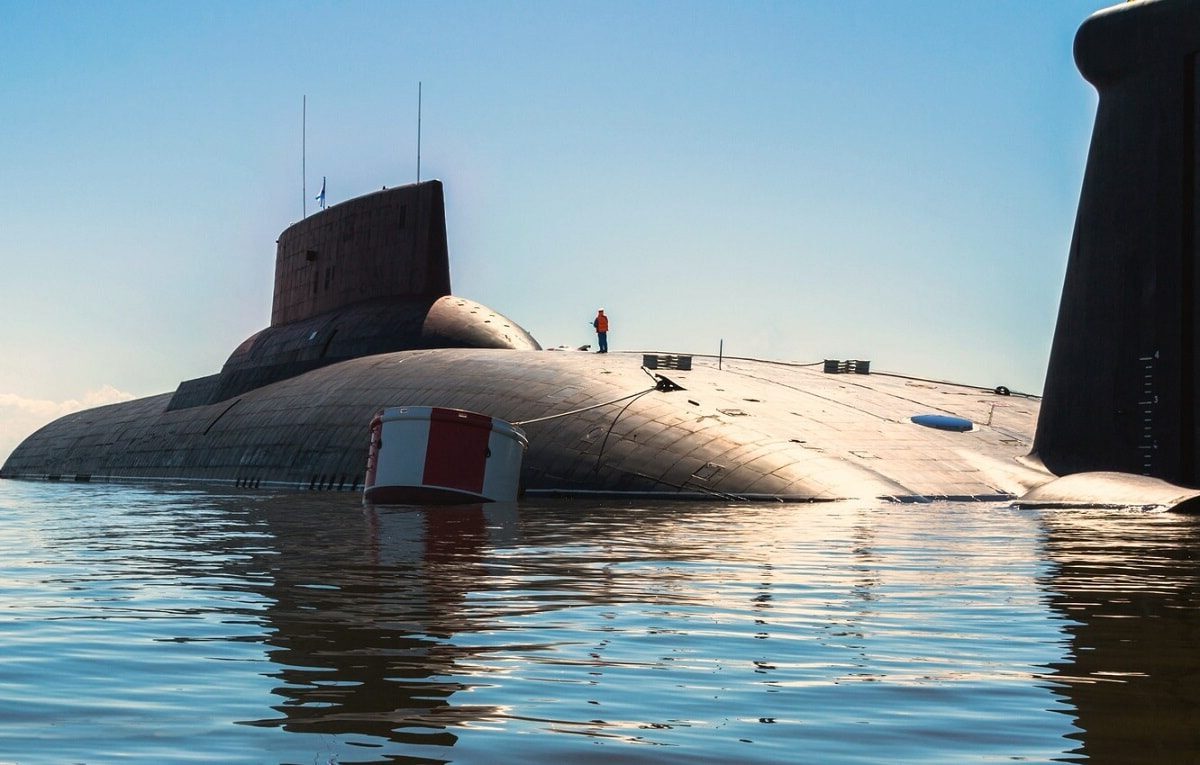What made the Typhoon-Class Special? During the final years of the Cold War, an arms race consumed both the United States and the Soviet Union. Back and forth the two great powers went, in a costly push and pull. The Soviet Union, bogged down in Afghanistan, corrupt at home, and later, facing a nuclear crisis in Chornobyl, struggled to keep up – but not for lack of effort. In the 1970s, the Soviet Union, concerned with their American foes, especially their new Ohio-class submarine, set about designing and producing the largest submarine ever built. They succeeded, creating what is now known as the Typhoon-class submarine, a nuclear-powered ballistic missile sub that displaces a staggering 48,000 tons. Well over a football field long (574 feet), the Typhoon-class submarines can house a 160-man crew while staying submerged for months at a time.
Keeping Up with Adversaries
When America unveiled its Ohio-class submarine, the Soviets were deeply concerned. Each Ohio could carry 192 of the 100 kiloton warheads. The Soviets wanted to craft a proportionate response, something with equal destructive potential, capable of lurking beneath the surface. The problem, however, was that the Soviet’s submarine-launched ballistic missile (SLBM), the R-39 Rif, was nearly double the size of its American counterpart, the UGM-96 Trident I.
My colleague, Caleb Larson, explains the reason for the staggering size difference between Soviet and American SLBMs: “According to the U.S. Naval Institute, this massive disparity in size between the American and Soviet/Russian missiles is due to the differences in plastics industry maturity, which in the United States, was able to create both plastic children’s toys, as well as important binders for solid-fuel missile components.”
So, if the Soviets wanted to build a submarine with as much destructive potential as the Ohio – a submarine that displaced 19,000 tons – that submarine would have to be significantly larger than the Ohio.
Outsizing the U.S. Ohio-class
The Typhoon is a massive, hulking, tech marvel, which displaces about 250 percent more than the Ohio. Featuring multiple pressure hulls, the Typhoon wasn’t just long, it was also substantially wider than a typical sub. Thanks to the pressure hulls, the Typhoon’s 160-man crew enjoys significantly increased survivability.
In addition to carrying SLBMs, the sub had six torpedo tubes, each designed to deploy the RPK-2 missile or Type 53 torpedo. The Typhoon built with a nuclear holocaust in mind can stay submerged for 120 days – and perhaps longer if necessary i.e. amidst a nuclear exchange. Allegedly, the Typhoon even included a variety of amenities, which space-saving requirements typically preclude from including on a warfighting vessel, such as a pool, sauna, waterfall, and bird aviary.
Produced between 1976 and 1985, six Typhoons were built. Only one remains in service, oddly, the first one ever built, the Dmitriy Donskoy. Launched in 1979, and commissioned in 1981, the Dmitriy Donskoy remains in active service, although it no longer holds the clunky R-39 Rif. Instead, the sub has been upgraded to use the Bulava missiles, a 21st-century Russian SLBM.
The last Typhoon-class sub is clearly in the twilight of its career. Used only in a limited, weapons testing role, the Dmitriy Donskoy is not expected to remain in service much longer than 2026. The world’s biggest ever submarine will be decommissioned and scrapped, like the other five Typhoon-class submarines, in favor of the Borei-class sub – a smaller sub that displaces just 24,000 tons, yet carries plenty of firepower: 16 Bulava SLBMs.
Harrison Kass is the Senior Defense Editor at 19FortyFive. An attorney, pilot, guitarist, and minor pro hockey player, he joined the US Air Force as a Pilot Trainee but was medically discharged. Harrison has degrees from Lake Forest College, the University of Oregon, and New York University. He lives in Oregon and listens to Dokken.

